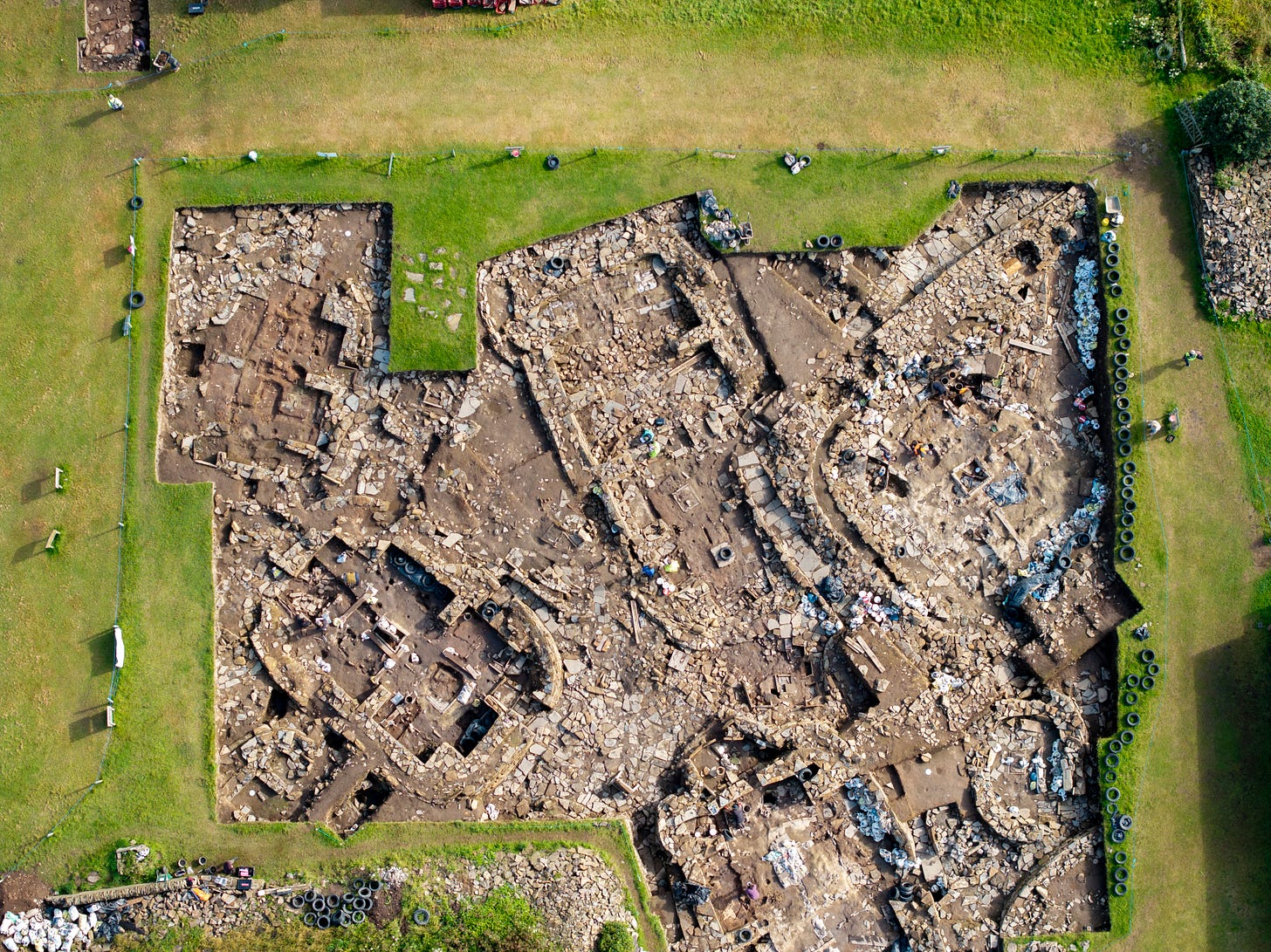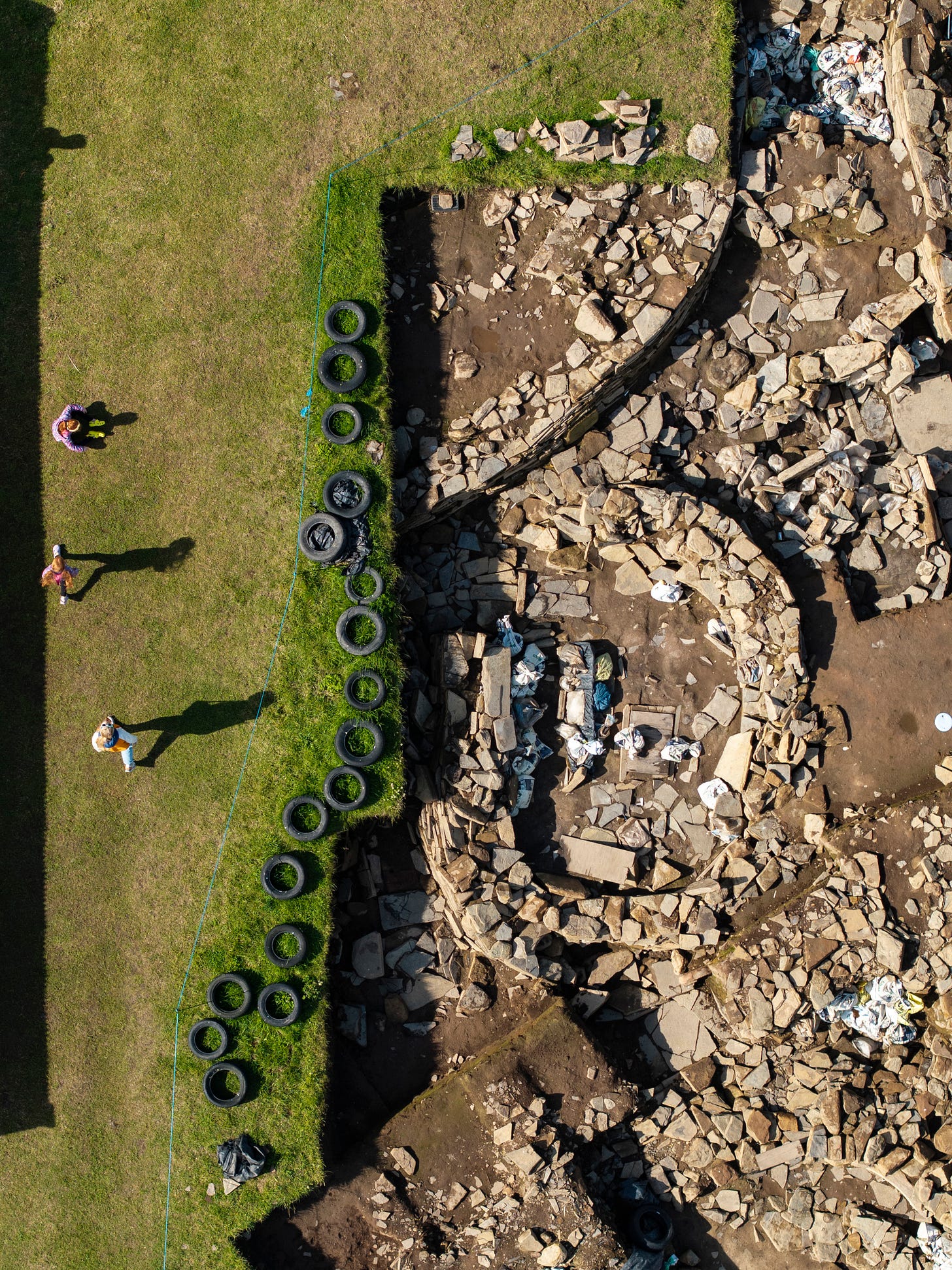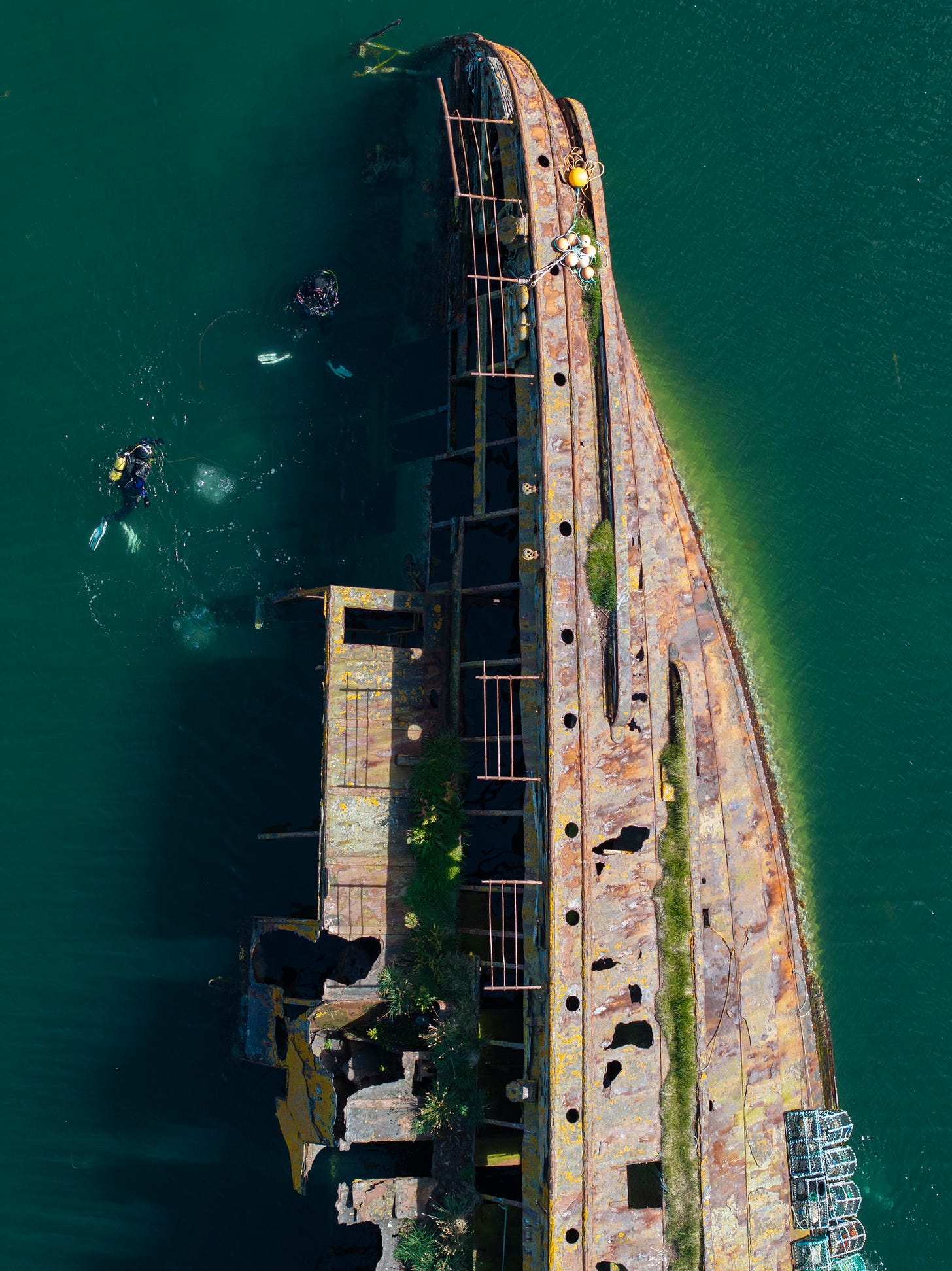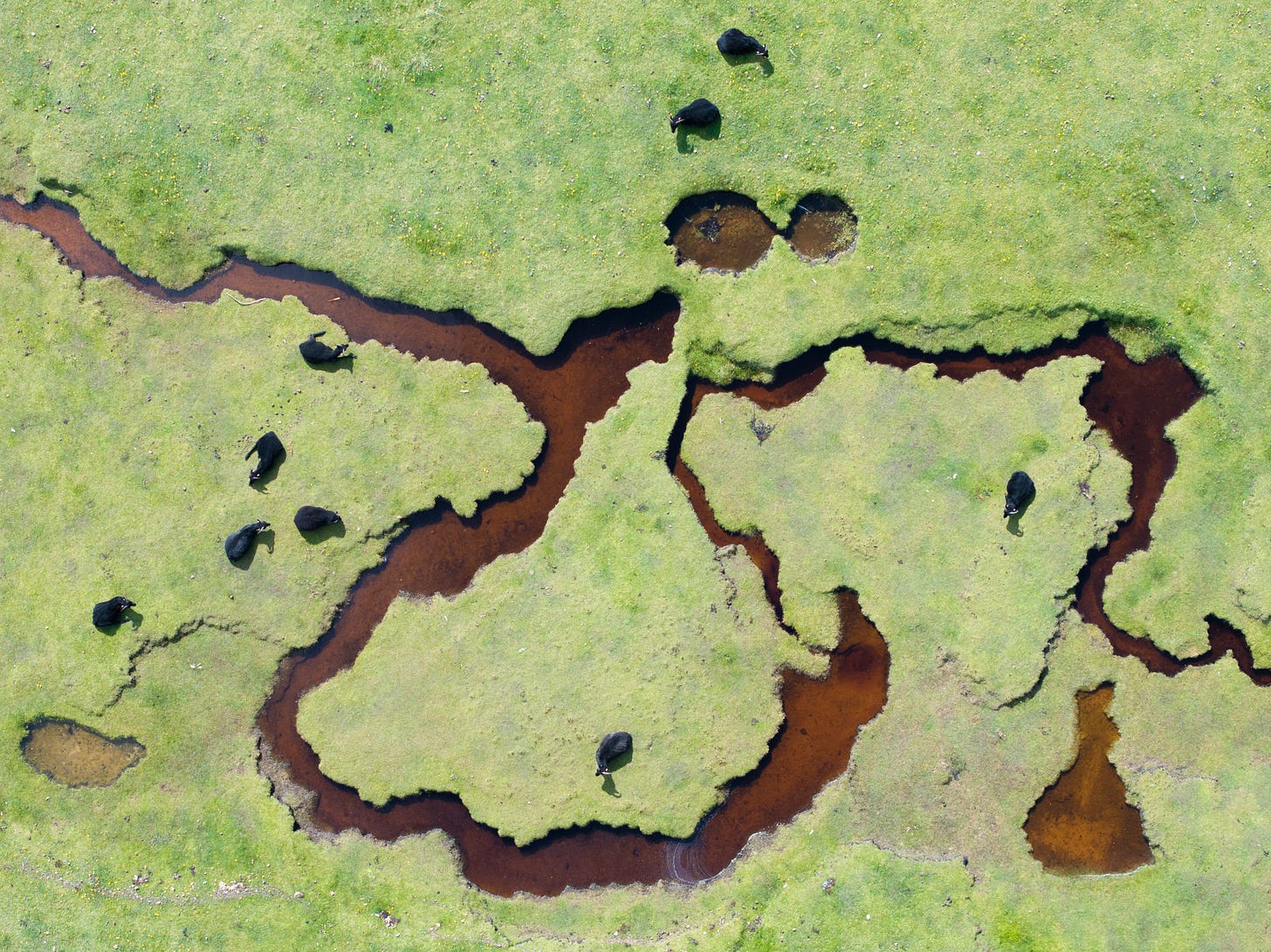The Overview
New Work from Summer 2024
A fresher wind blew as I cycled through the Old Town of Edinburgh. The final festival crowds continue to squeeze through the closes, but the sun is lower. The schools have returned and autumn is signalling her approach.
Scottish school holidays coincide with the plateau of high summer when daylength stretches on beyond our bedtimes. This year, after travelling for Gingers of America, I wanted to remain in the Scottish islands to gather images for my other project, Fabricated Land. In this letter, I am sharing the first fruits of that harvest, and my thoughts as to where they might go.
I also delivered the largest weave yet (shown from start to finish in this video) to the University of Stirling for an upcoming group show. The works are loaned or sold to support the making of new pieces. On that note, people often ask how I make a living, and I have a written response coming soon! (Hint: perhaps you are part of the answer.)
Now for some summer highlights:
A Window on the Distant Past
This was THE image I wanted from the summer, one I have planned for years and received permission for a couple of months ago. The Ness of Brodgar archaeological site in Orkney dates back 5,000 years and is of huge historical significance. Excavations began in 2003, after a farmer struck rock when ploughing the field, and now the site has been reburied under the earth for, quite possibly, the rest of my life. I had one image in mind, an aerial view of the layered buildings, which resemble, I am told, a Middle Eastern tell site.
The Orkney Islands are my favourite part of the UK, unique in so many ways. Most striking historically is that they point us back not to the Clearances or the Jacobites (as do much of the Highlands) but all the way back to Neolithic times. Orcadians are stoneagers.
I often visited the islands as a teenage ornithologist, then as a student volunteer at a remote bird observatory, and later with my wife, wild camping before the twins came along. This time was our visit there with the girls, and it was a joy to behold Orkney through fresh eyes. On the first morning of the holiday, I was granted a free pass from my wife to go to the Ness and look around with the site manager. The rest of the family joined me later on and were equally excited by the place.
You can see the interview with site manager Nick Card on YouTube.
F8 and Be There, with Children
F8 and be there is the old Nat Geo adage. I say, F8 and be there with children.
I took Ada for a cake then suggested visiting a shipwreck. She loved the idea. The light was bright, just what we needed for a good drone shot, with the intense afternoon rays illuminating the turquoise waters. The wrecks were sunk during WWII to block sneaky German U-boats from slipping between islands to blow up the North Atlantic fleet harboured in Scapa Flow. When the Churchill barriers were constructed by Italian POWs, they left the ships in place.
I flew the drone around for a while, trying different angles while Ada collected shells. When I landed it, a huge man arose from the water resembling a bearded Neptune, albeit wrapped in neoprene rather than seaweed. He was one of a group of Liverpudlian divers on holiday and shouted to me in a broad Scouse accent that he was envious of my drone. Ada could not understand what he had said, and thought I was getting told off.
Baa Baa Black Sheep
I spent the final week of holiday working remotely with family as the girls attended a traditional music week. While they were playing the clarsach, fiddle and drum I was free to roam through the deluge that was Fort William. If Noah had landed here he would have kept the Ark, just in case.
I had scoured Google maps for days and found a beautiful estuary used by the military training for D-Day. As I arrived, I spotted the extra layer of narrative I needed – sheep, their wool coarse and black. I parked by an old red phone box, leapt on my bike and followed them. These smaller, almost goat-like sheep, are an original Hebridean variety, largely replaced by the white sheep from the south that also displaced humans during the Clearances but which now adorn tourist tat as if there were nothing more Scottish. Highland cows were originally much smaller and darker too. A reminder that if you can forge past the images on teatowels and shortbread tins, there are rich vistas beyond.
The challenge for this shot was capturing the sheep from above with enough clarity to show that they are sheep (or at least animals), while also celebrating the way they look like dark pools of water on the grass. I love the way they form part of the landscape.
Please tell me, what Scottish landscapes am I missing? Are there stories of Scotland you have discovered but never seen photographed?
Thanks again for reading this paid-for newsletter, and please do share this with friends and family. I am not Netflix: you can spread the email love.







Great pics and article on ancient civilisation pre dating pyramids in what is relatively recently Britain and even more recently, UK. Interview with Brodgar leader worth watching.